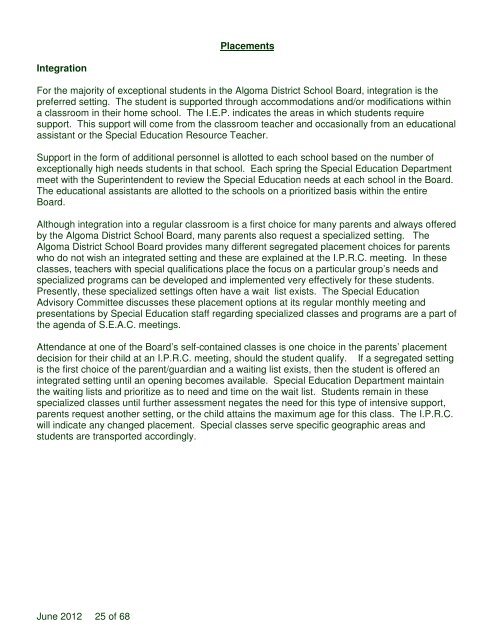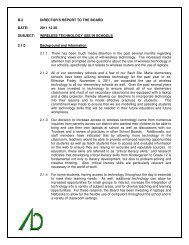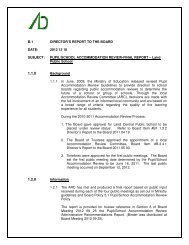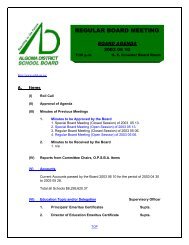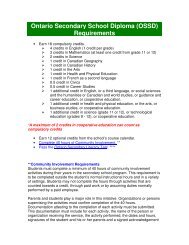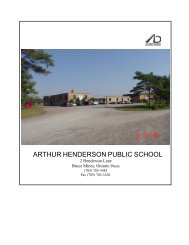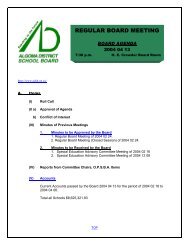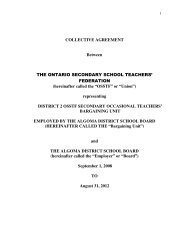Special Education Plan 2012-2013 - Algoma District School Board
Special Education Plan 2012-2013 - Algoma District School Board
Special Education Plan 2012-2013 - Algoma District School Board
- No tags were found...
Create successful ePaper yourself
Turn your PDF publications into a flip-book with our unique Google optimized e-Paper software.
PlacementsIntegrationFor the majority of exceptional students in the <strong>Algoma</strong> <strong>District</strong> <strong>School</strong> <strong>Board</strong>, integration is thepreferred setting. The student is supported through accommodations and/or modifications withina classroom in their home school. The I.E.P. indicates the areas in which students requiresupport. This support will come from the classroom teacher and occasionally from an educationalassistant or the <strong>Special</strong> <strong>Education</strong> Resource Teacher.Support in the form of additional personnel is allotted to each school based on the number ofexceptionally high needs students in that school. Each spring the <strong>Special</strong> <strong>Education</strong> Departmentmeet with the Superintendent to review the <strong>Special</strong> <strong>Education</strong> needs at each school in the <strong>Board</strong>.The educational assistants are allotted to the schools on a prioritized basis within the entire<strong>Board</strong>.Although integration into a regular classroom is a first choice for many parents and always offeredby the <strong>Algoma</strong> <strong>District</strong> <strong>School</strong> <strong>Board</strong>, many parents also request a specialized setting. The<strong>Algoma</strong> <strong>District</strong> <strong>School</strong> <strong>Board</strong> provides many different segregated placement choices for parentswho do not wish an integrated setting and these are explained at the I.P.R.C. meeting. In theseclasses, teachers with special qualifications place the focus on a particular group’s needs andspecialized programs can be developed and implemented very effectively for these students.Presently, these specialized settings often have a wait list exists. The <strong>Special</strong> <strong>Education</strong>Advisory Committee discusses these placement options at its regular monthly meeting andpresentations by <strong>Special</strong> <strong>Education</strong> staff regarding specialized classes and programs are a part ofthe agenda of S.E.A.C. meetings.Attendance at one of the <strong>Board</strong>’s self-contained classes is one choice in the parents’ placementdecision for their child at an I.P.R.C. meeting, should the student qualify. If a segregated settingis the first choice of the parent/guardian and a waiting list exists, then the student is offered anintegrated setting until an opening becomes available. <strong>Special</strong> <strong>Education</strong> Department maintainthe waiting lists and prioritize as to need and time on the wait list. Students remain in thesespecialized classes until further assessment negates the need for this type of intensive support,parents request another setting, or the child attains the maximum age for this class. The I.P.R.C.will indicate any changed placement. <strong>Special</strong> classes serve specific geographic areas andstudents are transported accordingly.June <strong>2012</strong> 25 of 68


